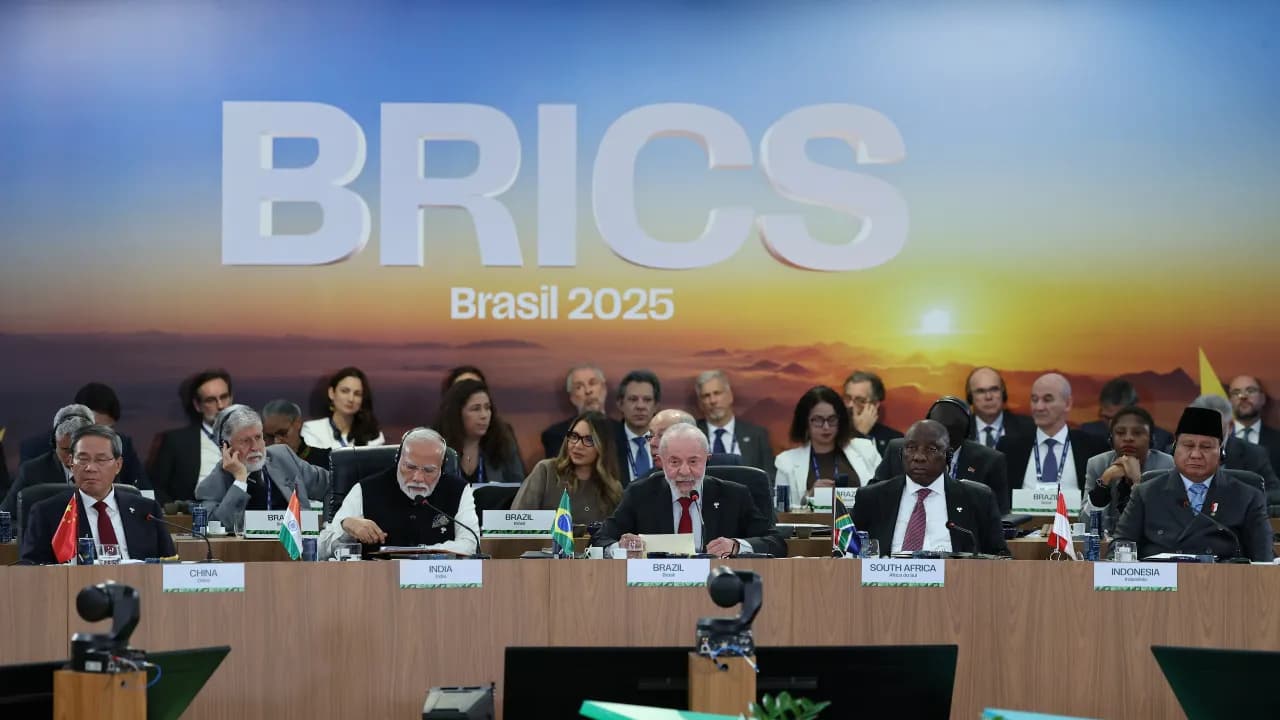Trump’s latest tariff salvo targets India, accusing it of aiding Russia’s war indirectly. Expert warns that this may accelerate India’s pivot towards China and BRICS+ bloc.
On Wednesday, U.S. President Donald Trump escalated trade tensions by doubling tariffs on Indian imports from 25% to 50%. He cited India’s continued import of Russian oil, which he believes indirectly supports the Ukraine – Russia war.
But what are the real implications of these tariff wars on US – India trade partnerships? SEBI-registered analyst Rajneesh Sharma breaks it down.
Change in global geopolitics?
The tariffs are far from being a routine trade move, it has marked a dramatic shift in global geopolitics, Sharma said. It not only strained ties between long-time partners India and the U.S. but also nudged historical rivals India and China, toward an increasingly pragmatic alignment.
The move was the latest in a rapid series of tariff escalations in 2025 which began on April 2, what Trump declared as “Liberation Day”. A sweeping 10% tariff was imposed on all foreign goods, with retaliatory tariffs reaching 145% on Chinese products.
On July 31, India was specifically targeted with a 25% tariff, justified by its continued import of discounted Russian oil amid the Ukraine conflict. Just six days later, the tariff was doubled to 50%, accusing India of indirectly financing the war.
Tariff impact on US consumers
Though the tariffs were touted to generate over $400 billion in revenue for the U.S., economists pointed out the hidden costs. American businesses and consumers are expected to bear the brunt through higher prices and supply chain disruptions.
According to Sharma, the decision exposed America’s declining leverage, from commanding nearly half of global GDP post-WWII, the U.S. now accounts for only about 15% in PPP terms, with China surpassing $35 trillion in GDP compared to America’s $25 trillion. Washington’s influence over multilateral institutions has been fading, with countries increasingly looking eastward for leadership and stability.
India, for its part, responded with sharp criticism, calling the tariffs “unjustified and unreasonable.” Officials pointed out glaring inconsistencies – the West continued trade with Russia, yet India was singled out.
The U.S. decision to grant China a 90-day tariff reprieve only reinforced India’s perception of Washington’s selective, interest-driven approach. For New Delhi, the message was clear: it could no longer rely on the West as a stable partner.
Renewed partnership with China?
Sharma believes that the timing of the tariffs comes at a pivotal point. India is a significant economy in the BRICS+ forum, which features nearly half the world’s population and around 40% of global oil production. BRICS+ is increasingly positioning itself as an alternative to Western-led institutions like the IMF and World Bank.
However, India’s attractiveness as a China+1 manufacturing hub has taken a hit due to the tariffs, prompting investors to explore Southeast Asian nations instead, Sharma noted.
The tariffs could lead to India and China bridging their differences, he observed. After years of border skirmishes, both sides signed a de-escalation pact in late 2024. Diplomatic and people-to-people exchanges resumed, and Prime Minister Narendra Modi’s planned visit to China for the August 2025 SCO summit signaled a significant thaw in relations.
Pragmatism is now driving both nations: India depends on China for critical tech inputs and rare earths, while China values access to India’s vast consumer market, Sharma noted.
Ultimately, Trump’s tariff escalation could be remembered as the spark that accelerated the global power shift, which is already underway, the analyst stated. It fragmented supply chains, unsettled traditional alliances, and brought emerging powers like India and China closer.
As BRICS+ gains momentum and the U.S. seeks new allies, the global system now moves toward a more complex, decentralized balance, Sharma said.
For updates and corrections, email newsroom[at]stocktwits[dot]com<
